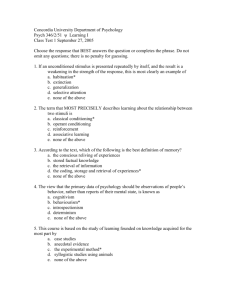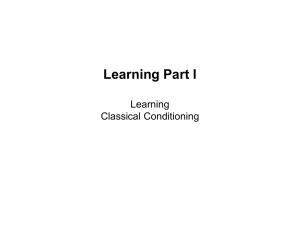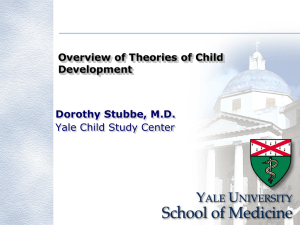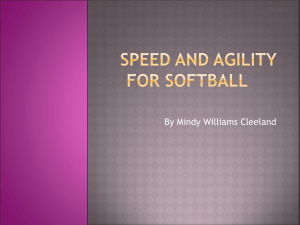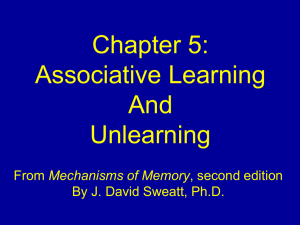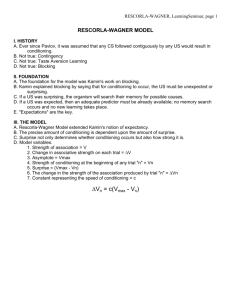Document
advertisement
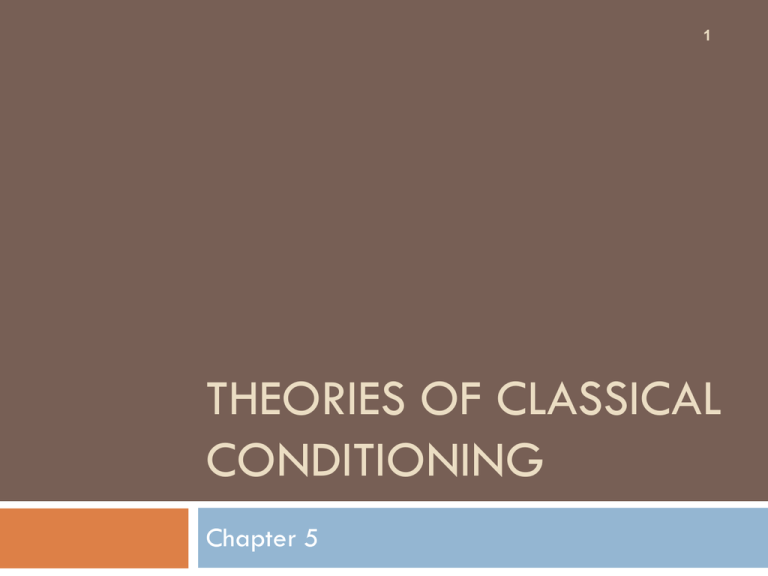
1 THEORIES OF CLASSICAL CONDITIONING Chapter 5 Rescorla-Wagner Explains 2 1) Acquisition and extinction of a CS+ 2) Acquisition but not extinction of a CS3) Overshadowing and blocking 4) Overexpectation 5) Supernormal conditioning 6) CS-US contingency 7) US preexposure Contingency and the R-W model P(US/CS), pairing of CS with US P(US/no CS), pairings of context with US Cage Experimental Context A day in the life of Sniffy the rat Rethinking The Contingency Experiment 4 CS (A) US CONTEXT (X) (AX+) (X-) Chance of US per CS = 4/5 = .8 Chance of US outside CS = 2/10 = .2 (X+) (AX-) DP = .6 P(US/CS) P(US/no CS) Perfect Positive Contingency DP = .8 DP = .6 DP = .4 Zero DP = 0 Contingency DP = −.4 DP = −.6 Perfect Negative Contingency DP = −.8 US Pre-exposure Effect 6 US pre-exposure effect: Exposure to the US before conditioning; it impairs later conditioning when a CS is paired with that US. The R-W model: The presentation of the US without the CS occurs in a specific environment or context, which results in the development of some associative strength to the context. Associative strength to the context reduces the level of possible conditioning to the CS on the early trials because VALL is nonzero. 7 The US pre-exposure effect is attenuated when the pre-exposure context is different from the conditioning context Other contexts will not have strength, so conditioning proceeds normally. Rescorla-Wagner Doesn’t Explain 8 1) Failure of a CS- to extinguish (a bad prediction) 2) Second-order conditioning (didn’t include but known; lesson: CS to CS associations) 3) Latent inhibition or CS prexposure effect (didn’t include but known; lesson: a should not be fixed) 4) Potentiation rather than overshadowing in taste aversion 5) Performance effects, such as deflation Potentiation of a Conditioned Response 9 Rescorla-Wagner model predicts that when a salient and nonsalient cue are presented together with the US, the salient cue will accrue more associative strength than the nonsalient cue Overshadowing: In a compound conditioning situation, the prevention of conditioning to one stimulus due to the presence of a more salient or intense stimulus Potentiation: Tastes often help (rather than hinder) the development of odor aversions Potentiation and Pregnancy Sickness Later Smell Weak Coffee Odor Aversion Smell & Taste Strong Coffee Odor Aversion Explanations of Potentiation of a Conditioned Response 11 Within-Compound Association (CS− CS association): the association of two stimuli, one of which is paired with a US, which leads both CSs to elicit the CR. Configural Learning: Compound is treated as a single unitary CS, and individual element for the compound can each trigger the compound. Sensory-Gate Channeling: Taste opens a gate in the brain allowing odor to serve as a CS for illness when it otherwise would not. Acquisition versus Performance 12 Rescorla-Wagner attributes differences in CR strength to learning. Responding to the CS is determined by the associative strength of the CS on the previous trial. Comparator hypothesis argues that many differences in CR strength are due to differences performance. CR strength is determined by a comparison of the associative strength of the target CS and the associative other stimuli trained along with the target (CSs or contexts). Miller’s Comparator Hypothesis Cue Deflation Effects 14 Cue deflation effect: When the extinction of a response to a comparator cue after conditioning leads to an increased reaction to the target CS. Rescorla-Wagner model cannot explain change in the reaction if a CS if it has not been presented in the interim Prototypical Cue Deflation Result 15 Group Exper Control Stage 1 A+ in Context X A+ in Context X Stage 2 XY- Test A CR cr When the extinction of a conditioning context (Context X), but not a control context (Context Y), after conditioning leads to an increased reaction to the target CS (A) 16 Mackintosh’s attentional theory proposes that the relevance of and attention to a stimulus determine whether that stimulus will become associated with the US (related to the lesson that a should not be fixed) Baker’s retrospective processing approach suggests that conditioning involves the continuous monitoring of contingencies between a CS and a UCS, with the recognition of a lack of predictiveness diminishing the value of the CS (related to comparator)
